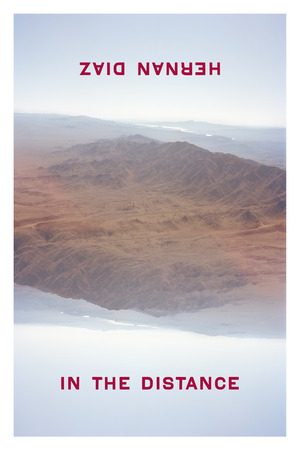With In the Distance, Hernán Díaz Weaves an Extraordinary 1800s Tale

In the Distance, Hernán Díaz’s debut novel, begins aboard an ice-breaking vessel trapped in ice off the coast of Alaska in the late 1800s. The ship’s restless crew and passengers gather around a fire as they listen to the life story of a mysterious man around whom rumors swirl.
The man is not, he tells his rapt—if wary—audience, a Native American chief. He’s a Swede named Håkan Söderström, who received his nickname of The Hawk due to the fact that nobody in the United States could pronounce his first name. (The narrator describes the “å” in Håkan as a “u that immediately bled into an o, and then into an a, not in succession, but in a warp or a bend, so that for a moment all three sounds were a single one.”)
 Håkan’s story begins in childhood. He and his older brother Linus are sent off to “Nujårk,” a place that Linus tells Håkan is full of magic, wonder and impossibilities. But the boys get separated in Portsmouth, England, and Håkan winds up in gold rush California instead of New York. From the moment he sets foot on land, his mission is clear: he must cross the enormous landmass that separates the Pacific from the Atlantic to find Linus.
Håkan’s story begins in childhood. He and his older brother Linus are sent off to “Nujårk,” a place that Linus tells Håkan is full of magic, wonder and impossibilities. But the boys get separated in Portsmouth, England, and Håkan winds up in gold rush California instead of New York. From the moment he sets foot on land, his mission is clear: he must cross the enormous landmass that separates the Pacific from the Atlantic to find Linus.
Only—surprise, surprise—things don’t quite turn out that way. Numerous obstacles get thrown in the young man’s path; his journey oscillates between intense deprivation and unforeseen bounty, over and over and over. It introduces him to corrupt wildcat gold miners in California, a naturalist who sets out into the desert in order to prove the shared origin of all things, a huckster who takes advantage of Oregon Trail migrants and a crooked sheriff who drags Håkan across vast Midwestern plains. In between these encounters, he is forced to rely on his own strength as well as the bounty of the natural world.
The story Håkan tells is a Western, of sorts. Or is it a mystical parable about a troubled world? Or perhaps an apocalyptic road novel, drenched in blood and fire and thirst? An elaborate homage to the Odyssey (or to Borges’ love of cowboys)? A historical novel about 18th-century migration to the U.S.?
It is all of those things, though its deceptively simple narrative structure—a man tells a captive audience a gripping tale—manages to resist easy categorization. The prose is smooth and light, its protagonist and central character freed of weighty reflection, zig-zagging anxiety or any linguistic fireworks. Yet this lightness makes In the Distance a difficult thing to grasp; it is a book that rewards re-reading.
Shortly after Håkan lands in California, the narrator notes that America “did not make a deep impression” on the man:
…he had come to expect a dreamlike, outlandish world. Even if he was unable to name the trees, did not recognize the songs of the birds, and found the dirt on barren stretches surprisingly red and blue, everything (plants, animals, rocks) came together in a reality that, although unfamiliar, belonged, at least, in the realm of the possible.
Like Håkan’s America, so too does In the Distance firmly exist in the “realm of the possible.” Yet Díaz’s great gift lies in reconfiguring the possible, the expected, the taken-for-granted into something extraordinary.
Lucas Iberico Lozada is Paste’s Assistant Books Editor. You can follow him on Twitter.







































